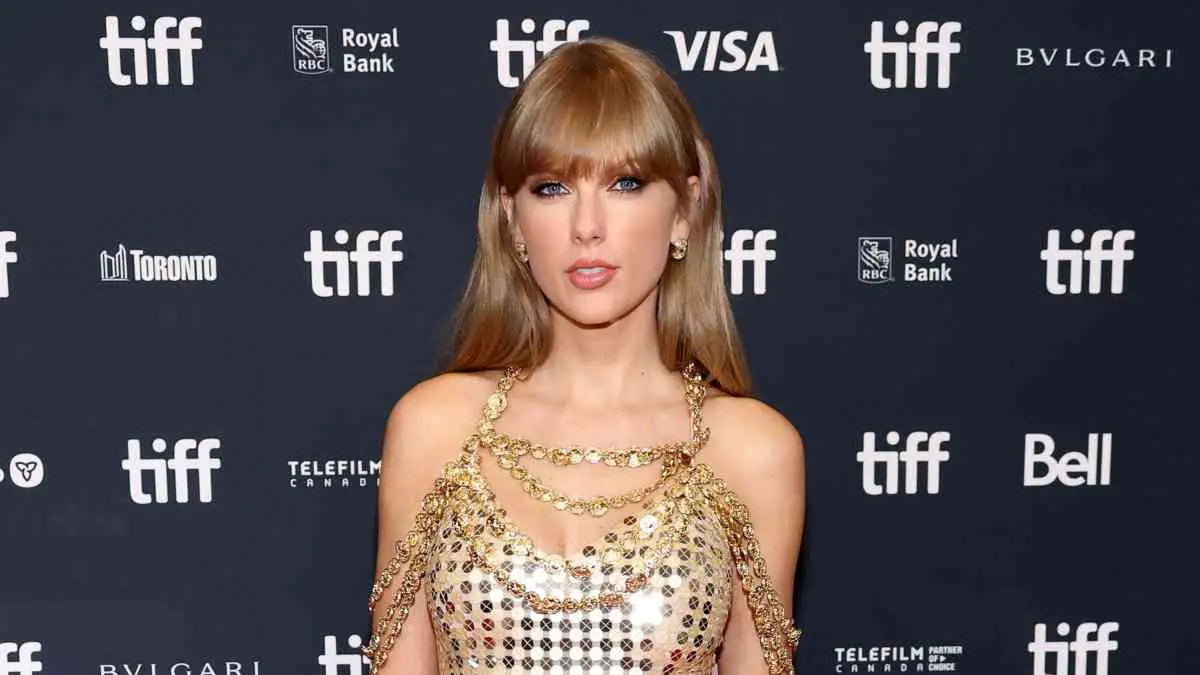In a world where technology is advancing at an extraordinary pace, no one, not even international superstars like Taylor Swift, is secure from the invasive reach of deepfake photographs generated using artificial intelligence. The recent proliferation of explicit deepfake pix of Taylor Swift on diverse social media systems has despatched shockwaves through her fanbase and ignited a fresh debate on the want for stringent safeguards and rules within AI-generated content.
The controversy started while faux, sexually explicit photographs of Taylor Swift, most probably created by the use of artificial intelligence, began circulating extensively on social media systems. Millions of users have been exposed to those stunning photos, leaving each lover and lawmaker deeply disturbed. These snapshots raised crucial questions about the responsibility of tech businesses and the urgency of shielding people, particularly ladies, from such malicious content.
One especially alarming incident concerned a consumer on X (formerly Twitter) who shared this sort of explicit deepfake pics. This photo garnered a mind-blowing 47 million views before the accountable account was suspended. X, along with other social media systems, made efforts to eliminate those faked pix. However, they persevered to increase despite the platforms’ attempts to combat them.
As X struggled to remove those images, Taylor Swift’s devoted fanbase rallied on the platform. They flooded it with associated keywords and the sentence “Protect Taylor Swift” to overshadow the explicit content and make it more challenging for customers to come upon it.
The Role of Artificial Intelligence in Deepfakes
The upward thrust of the deepfake era has been facilitated by the fast boom of the synthetic intelligence enterprise. Companies are racing to develop tools that allow users to create convincing pix, motion pictures, textual content, and audio recordings with minimal attempt. While those AI-powered tools are immensely famous, they have made it less difficult and more inexpensive than ever to produce deepfakes—media that portrays individuals saying or doing things they have never performed.
This disturbing fashion is going beyond the area of enjoyment; it’s a developing challenge for society. Deepfakes are now considered a potent weapon for spreading disinformation. They empower regular net customers to create nonconsensual nude snapshots or embarrassing portrayals of political applicants. For example, synthetic intelligence generated fake robocalls, providing President Biden throughout the New Hampshire primary. Even Taylor Swift located herself featured in deepfake ads promoting cookware, a bizarre and concerning scenario.
Deepfakes: A New Breed of Online Harm
“It’s continually been a dark undercurrent of the net, nonconsensual pornography of diverse sorts,” cited Oren Etzioni, a PC technological know-how professor at the University of Washington who makes a specialty of deepfake detection. “Now it is a completely new source of stress that is primarily harmful.”
The advent of AI-generated express pics is a cause for alarm. Experts warn that we can be on the cusp of witnessing a tsunami of such content material. Those who create those deepfakes view their movements as successes and exacerbate the issue.

Spotting the scenario’s gravity, X asserted its 0-tolerance policy towards such content. A representative stated, “Our teams are actively eliminating all identified photographs and taking appropriate actions in opposition to the accounts chargeable for posting them. We’re intently monitoring the scenario to ensure that any additional violations are immediately addressed and the content material is eliminated.”
However, X has faced its very own demanding situations, considering that it was received by Elon Musk in 2022. The platform has witnessed a growth in intricate content material, including harassment, disinformation, and hate speech, following Musk’s takeover. Musk’s technique has involved:
- Loosening the internet site’s content regulations and taking actions along with firing.
- Shedding.
- Accepting the resignations of workforce contributors tasked with casting off offensive content.
The Battle Against Deepfakes
Many corporations that develop generative AI equipment restrict customers from growing specific imagery. Despite these policies, people have decided to discover ways to circumvent them continually. “It’s an arms race, and every time any individual comes up with a guardrail, someone else figures out how to jailbreak,” observed Mr. Etzioni.
The preliminary source of the express Taylor Swift deepfake photos became traced back to a channel at the messaging app Telegram devoted to generating such content material, in keeping with 404 Media, an era news site. However, while these deepfakes unfolded to structures like X and other social media services, they received extensive interest and traction.
Efforts to fight deepfakes were made on the state degree, with some areas implementing restrictions on pornographic and political deepfakes. However, these regulations have been verified useless in curtailing the problem, and there are presently no federal rules governing deepfakes of this nature. Platforms have tried to cope with the situation by relying on personal reviews. Still, when those reviews are acted upon, tens of millions of users have already been exposed to offensive content.
Calls for Action and Regulation
The explicit deepfake photos of Taylor Swift have brought on renewed motions from lawmakers. Representative Joe Morelle, a Democrat from New York, who introduced an invoice in the preceding 12 months to criminalize the sharing of such images, expressed his outrage at the spread of these pix, labeling it “appalling.” He introduced, “It’s occurring to girls everywhere, every day.”
Senator Mark Warner, a Democrat from Virginia and chairman of the Senate Intelligence Committee highlighted the risks of AI-generated nonconsensual intimate imagery, declaring, “I’ve again and again warned that AI may be used to generate nonconsensual intimate imagery.” He emphasized the gravity of the situation, deeming it “deplorable.”
Representative Yvette D. Clarke, a Democrat from New York, mentioned that advancements in synthetic intelligence have made it less complicated and less costly to create deepfakes. She asserted, “What’s come about to Taylor Swift is nothing new.”
The proliferation of explicit deepfake images of Taylor Swift is a stark reminder of the demanding situations posed by the swiftly evolving AI generation. It underscores the pressing need for comprehensive guidelines and safeguards to protect people from malicious deepfake content. As technology develops, society should adapt to ensure that individuals, particularly women, are protected from the harmful results of this digital deception. The struggle against deepfakes has begun, and we must stand collectively to guard our virtual integrity and protect the privacy and dignity of all individuals.






















+ There are no comments
Add yours